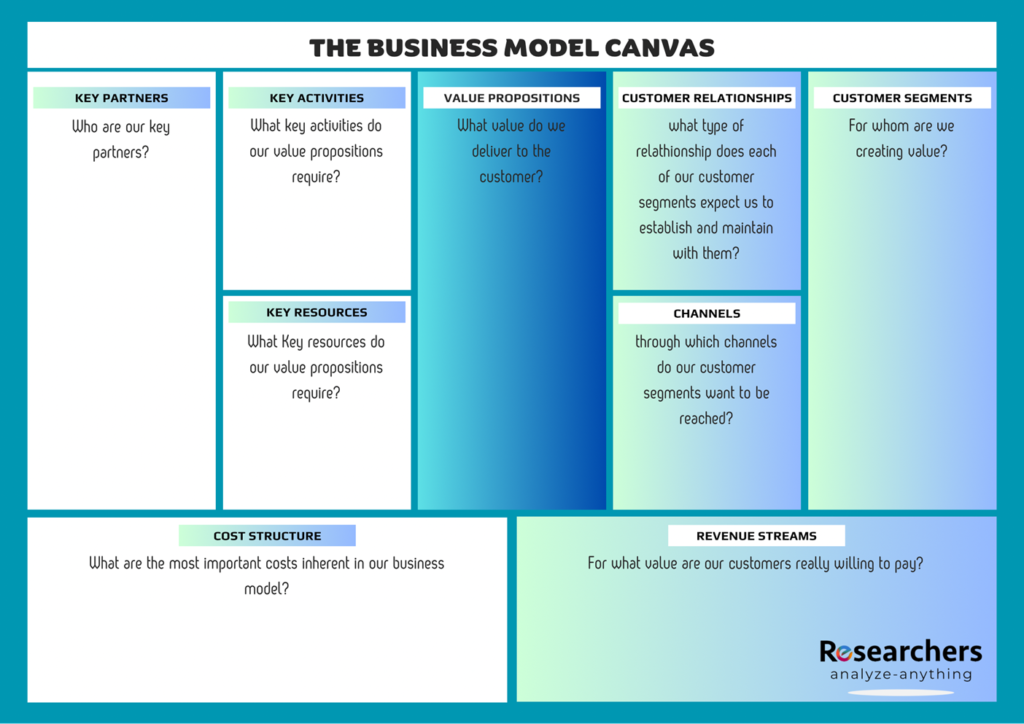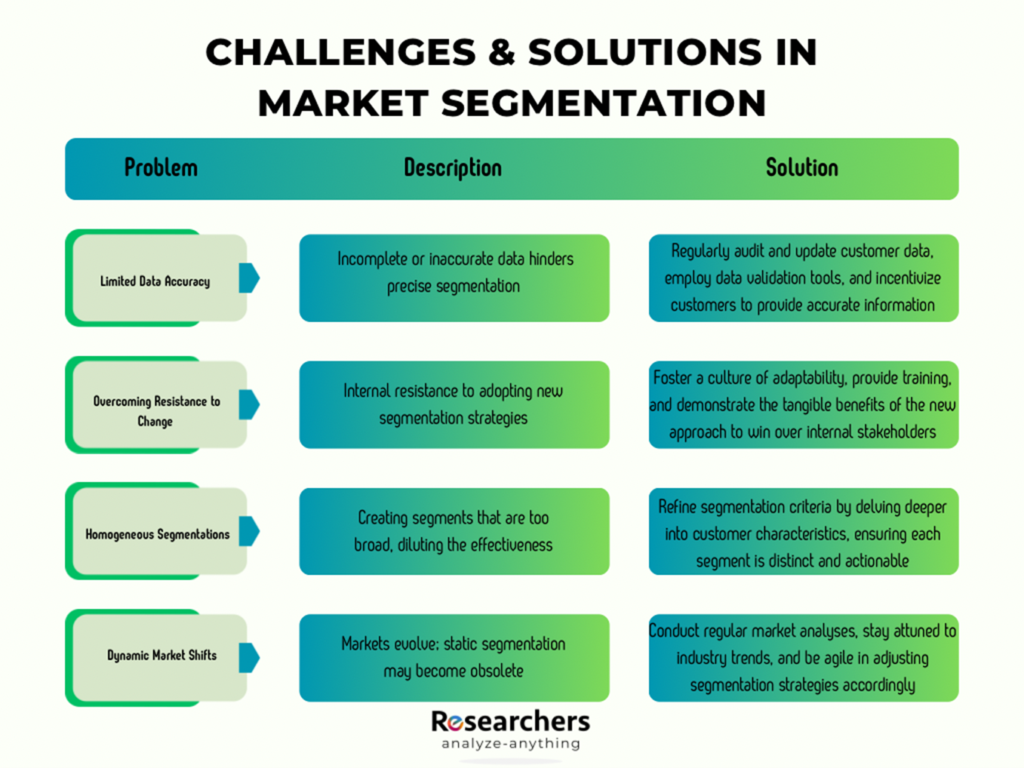Ever felt like a product or service just “gets” you? That’s the magic of market segmentation, the secret sauce in the world of targeted marketing. Rather than shouting to the masses, businesses strategically carve out smaller groups within their audience. You understand the quirks, needs, and desires of this small group. It’s like tailoring your message for a friend rather than addressing a faceless crowd.
In this guide, we dive into all market segmentation entails. We unravel what it is, why it matters, and how businesses use it to speak directly to your heart and needs. Ready? Let’s roll!
Importance of Market Segmentation
it’s not magic how your favorite brands know you so well; it’s market segmentation. Let’s unwrap the gift of understanding why market segmentation is a game-changer in the world of personalized marketing.
It Helps You Understand the Mindset of Your Consumers
Market segmentation is like peeling an onion, revealing layers of diverse consumer characteristics. It goes beyond simple demographics, considering factors like age, income, and location. The real magic happens when businesses dig deeper… exploring
- psychographics (think lifestyles and interests),
- behaviors, and even
- firmographics for B2B connections.
It’s about recognizing that your customers aren’t all the same; they’re a dynamic mix of unique individuals.
It Helps You Intensify Your Marketing Strategy
Now, let’s talk about effectiveness. Imagine you’re shopping for shoes. Are you more likely to respond to an ad that speaks directly to your love for hiking, or a generic one-size-fits-all shoe promotion? Effective market segmentation ensures that businesses don’t just throw spaghetti at the wall; they aim for the bullseye. By tailoring their strategies to specific segments, they hit the mark with personalized offers, resonating messages, and products that feel tailor-made.
Allows For Personalized Recommendations
According to Evergage, 99% of marketing experts believe personalization advances customer relationships. Personalized marketing is the holy grail, and market segmentation is the map leading businesses there. Consumers crave something special. Market segmentation empowers businesses to deliver precisely what each segment desires. Whether it’s customized promotions for fitness enthusiasts or exclusive deals for tech-savvy millennials. Personalized marketing is the love language of brands to their customers.
The Market Segmentation Process
A study carried out by McKinsey in 2018 had reported that only 40% of personalized marketing was well targeted. Creating a market segmentation strategy is akin to painting a masterpiece. It requires precision, attention to detail, and a deep understanding of the canvas. Let’s unravel the steps to effective market segmentation.
Step One: Identify Your Segmentation Criteria
This is where the journey begins. Your company needs to decide the basis on which to divide their market. Is it demographics like age and income, or perhaps psychographics related to lifestyle and interests? These criteria lay the foundation for a strategy that resonates.
Step Two: Select the Segmentation Variables That Work for You!
With criteria in hand, it’s time to choose the variables that will define each segment. Demographic criteria includes age groups, while behavioral variables involve customer loyalty and purchasing patterns. The variables bring nuance to the segmentation, ensuring each slice is distinct.
Step Three: Conduct Your Market Segmentation Analysis
Now, it’s crunch time. We dive deep into data, analyzing the characteristics and behaviors of different segments. This analysis is the compass guiding strategic decisions. It unveils opportunities, highlights challenges, and shapes a roadmap for effective engagement.

Basis of Market Segmentation
The basis upon which you carve out distinct consumer segments is crucial. Let’s go through the various foundations that underpin effective market segmentation. Each foundation provides a unique lens to understand and connect with your audience.
Geographic Segmentation
We now live in a world where borders are blurred by technological advancement. Yet, geographic segmentation still holds immense value. It divides markets based on location, whether by country, region, city, or even climate. For instance, a sunscreen brand might tailor its products differently for sunny regions compared to cooler climates.
Demographic Segmentation
Numbers tell stories, and demographic segmentation speaks volumes. Age, gender, income, education – these statistics create segments with common traits. Think of a smartphone manufacturer catering sleek models to tech-savvy young adults. Or durable, user-friendly devices for the older demographic.
Psychographic Segmentation
Delving into the psyche of consumers, psychographic segmentation revolves around interests, values, and lifestyles. A classical example is fitness brands targeting health enthusiasts with an active lifestyle. This tailors products and messages to align seamlessly with their values.
Behavioral Segmentation
Unveiling patterns and preferences, behavioral segmentation dissects how consumers interact with products. Are they loyal customers, or do they sway with the latest trends? Based on this information , businesses work towards tending to specific needs. Example: an e-commerce platform can offer exclusive deals to frequent shoppers to acknowledge their loyalty.
How to Craft Quality Market Segmentation Strategies
Navigating the seas of market segmentation requires a strategic compass. Let’s chart a course through actionable strategies to steer your business towards successful segmentation.

Step One: Identify the Bullseye
Your target market is a specific pond where your offerings create ripples. Tailor your products or services to meet the distinct needs of this concentrated group. Imagine a fishing rod – casting it with precision ensures a higher chance of a meaningful catch.
Step Two: Stand out in the Crowd
While it might be tempting to be everything to everyone, differentiation sets you apart. Highlight what makes your brand unique and cater to specific segments. Just as a gem sparkles among stones, your unique selling propositions should shine in the market.
Step Three: Learn From the Trailblazers
Look at successful market segmentation examples. Apple, for instance, targets tech enthusiasts with innovative features while simultaneously appealing to the design-conscious. Emulate these success stories but remember, what works for them needs your unique twist.


Conclusion
As we unveil the intricacies of Market Segmentation, the significance of tailoring messages to specific consumer groups becomes evident. It’s not just about dividing markets; it’s about forging connections, predicting needs, and delivering value with precision.
Ready to Dive into the World of Targeted Marketing?
Researchers.me is your compass to market intelligence. Explore our platform to unlock a wealth of insights. Stay ahead of market trends, and elevate your segmentation strategies. Join us on the journey to transform challenges into opportunities and witness the power of personalized marketing with us.
Craft your path to success – Explore Researchers.me today!

